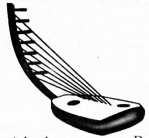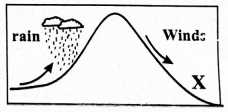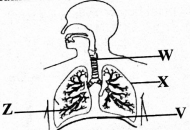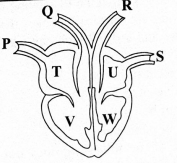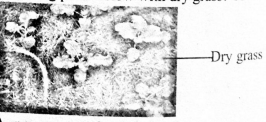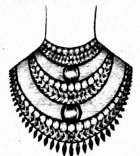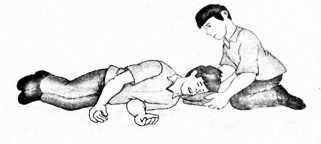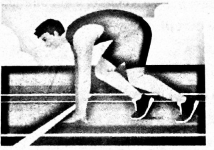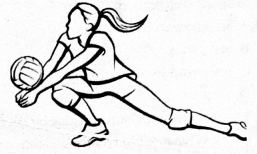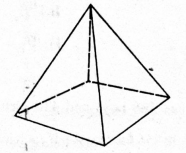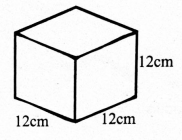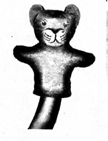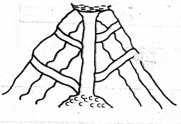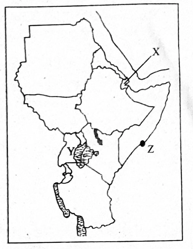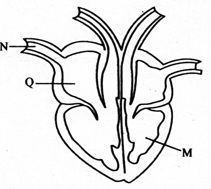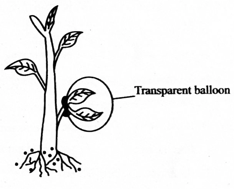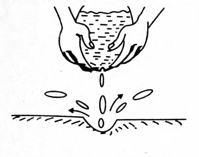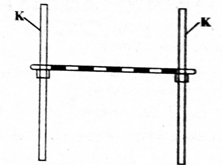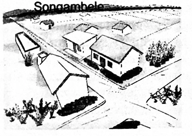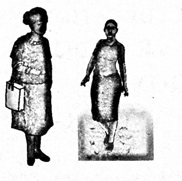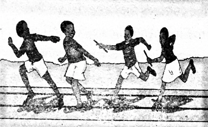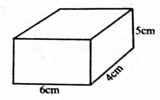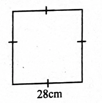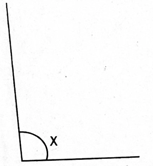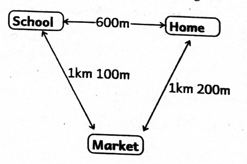Stella
Creative Arts & Social Studies Questions and Answers - Grade 6 Opener Exams Term 2 2023 Set 3
ART AND CRAFT
- The technique of shading where dots are used to show value on drawn forms by arranging them close together to show darker and lighter parts is known as
- smudging
- tonal value
- stippling
- painting
- What is the result of mixing the following colours
Primary Colour + Secondary colour:- secondary colour
- tertiary colour
- primary colour
- orange
- The drawing involves forms that one has not seen or interacted with before is known as
- drawing from observation.
- imaginative composition
- still life drawing
- cross hatching
- An imaginary line that divides a drawing into two halves is called
- axis
- depth
- equator
- balance
- The technique that involves applying of paint on a pictorial composition is known as
- crayon etching
- painting
- smudging
- shading
- Which one of the following is not a principle of art?
- Shapes
- Balance
- Proportion
- Rhythm and movement
- Which one of the following materials cannot be used to create montage in pictorial composition?
- Brushes
- Manilla paper
- Glue
- Wet soil
- What does overlapping of cut-out images in montage create?
- Balance
- Manilla paper
- Glue
- Wet
- A basketry technique that involves coiling planted or rolled coils into a spiral and stitching them at each row to hold and secure in place is referred to as
- coiling
- stictching
- coil and stitch
- basketry
- When decorating a wristband, which one of them following materials cannot be used?
- Beads
- Strings
- Scissors
- Axe
MUSIC
- A performance where three people sing a 3-part song is called
- duet
- trio
- solo
- choral
- Songs performed by people from the same community are called
- sacred songs
- patriotic songs
- topical songs
- folk songs
- Which one of the following is not a feature ofa folk song?
- Mood
- Structure
- Climax
- Choral
- The gradual increase in volume when singing using a musical instrument is
- trio
- duet
- crescendo
- diminuendo
Use the musical instrument below to answer question 15 and 16.
- The musical instrument below is called?
- Adeudau
- Wandindi
- Abu
- Drum
- The musical instrument can be played by
- blowing
- plucking
- beating
- hitting
- The songs that are sung to show things that affect the community are called
- topical songs
- patriotic songs
- popular songs
- sacred songs
- Which one of the following voice parts can be sung by girls only?
- Soprano
- Bass
- Tenor
- Solo
- The musical note drawn below is called
- crotchet
- semibreve
- minim
- quaver
- The clothes worn by dancers during performance of songs are called
- uniforms
- props
- ornaments
- costumes
SOCIAL STUDIES
- Below are characteristics of a vegetation Zones in Eastern Africa
- Trees are tall
- Trees grow close together
- Trees are evergreen
- Trees have broad leaves
The vegetation zone described above is- rainforest vegetation
- mangrove vegetation
- swamp vegetation
- savannah vegetation
- Arabs came to settle in Eastern Africa MAINLY insearch of
- goods for trade
- fertile soils
- pasture and water
- iron for tool making
- Below are examples of physical features. Choose the one that is a drainage feature.
- Escarpment
- Valley
- River
- Hill
- The MAIN factor influencing population distribution in Eastern Africa is
- distribution of towns
- amount of rainfall
- availability of jobs
- availability of minerals
- Grade 6 learners can take part in community.development by
- making school rules
- building roads
- opening up business
- cleaning the local market
- The following are relief features in Eastern Africa. Which relief feature discourage human settlement?
- Plains
- Steep slopes
- Plateaus
- River valleys
- Grade 6 learners went on a field trip. They passed through a town where they saw many poorly built houses close together. The problem LIKELY to be found in such places is
- road accidents
- diseases
- low rainfall
- overcrowding
- The diagram below represents the formation of relief rainfall
The area marked X receives less rainfall because- it lies at a low altitude
- it has little vegetation cover
- it is sheltered from warm moist winds
- it is far from large water bodies
- Mekatilili wa Menza led the Agiriama people in fighting the British because
- the British stopped them from trading
- the British interfered with the independence
- the British were building a railway line
- the British sold them into slavery
- In Kenya diatomite is mined at
- Kimwarer in Kerio valley
- Bamburi in Mombasa
- Athi River in Machakos
- Kariadusi near Gilgil
- Kivoi wa Mwendwa was a great trader of the
- Akamba people
- Agikuyu people
- Agiriama people
- Ameru people
- A county government in Kenya is headed by
- a county commissioner
- a county representative
- a governor
- a senator
Use the map of Eastern Africa below to answer questions 33 to 35.
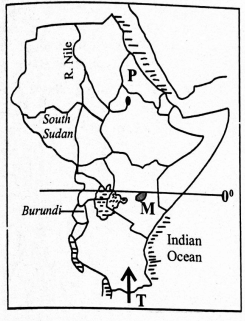
- The community that used the route marked T during the migration period is
- Chagga
- Ngoni
- nyamwezi
- Hehe
- The administrative capital city of the country marked P is
- Mitsiwa
- Djibouti
- Asmara
- Addis Ababa
- The shaded area marked M is densely populated due to
- presence of large towns
- mining activities
- availability of jobs
- availability of high rainfall
PART 11
CHRISTIAN RELIGIOUS EDUCATION
- The commandment that teaches Christian to respect the property of other people is
- "Do not accuse anyone falsely"
- "Do not commit murder"
- "Worship no other god but me"
- "Do not steal"
- God rested on the seventh day during the creation period because
- he was tired
- he had completed creation
- it was a day of rest
- he wanted to create human beings
- When Jesus called Peter and Andrew they were
- fishing
- collecting taxes
- looking after sheep
- offering a sacrifice
- Which one of the following was a tempetation of Jesus. The devil told him to
- change water into wine
- walk on water
- change a stone into bread
- raise a dead person
- The story of Jacob Wresting with an angel of God at Peniel teaches Christians to be
- brave
- determined
- courageous
- humble
- Jesus healed the Roman officer's servant inthe town of
- Capernaum
- Jerusalem
- Bethany
- Nain
- Which one of the following values is the MOST important in a Christian marriage?
- Wealth
- Education
- Faithfulness
- Smartness
- A Christian value learnt from the story of prophet Elisha raising an axe-head is
- courage
- humility
- patience
- faith
- God sent Adam and Eve out of the Garden of Eden because
- they disobeyed his commands
- they spoke to the snake
- they made clothes from leaves
- they hid in the garden
- The MAIN teaching of Jesus during the sermon on the mountain is
- helping people in need
- repenting sins
- living lives that please God
- accepting others
- At the time of the birth of Jesus his parents had gone to Bethlehem to
- Visit their relatives
- register there
- attend the passover feast
- escape from Herod
- The MAIN message of John the Baptist when he preached was
- tolerance
- patience
- repentance
- honesty
- Jesus compared the growth of the kingdom of God to
- a mustard seed
- a lost coin
- a fig tree
- a narrow door
- God called Moses in Midian to go to Egypt to
- perform miracles in Egypt
- lead the Israelities out of Egypt
- offer sacrifices in Egypt
- receive the ten commandments
- The donkey of Balaam spoke because
- an angel was blocking the way
- Balaam beat it
- God made it to speak
- it was tired of carrying Balaam
PART 11
ISLAMIC RELIGIOUS EDUCATION
- The story of Elephant is taught in which Surah?
- Kauthar
- Humazah
- Fiyl
- Kaafirun
- The Surah which tells us about the events of the last day is?
- Qariah
- Humazah
- Takathur
- Maun
- The Surah that emphasises on the important
- Maun
- Nas
- Fatiha
- Asr
- According to the hadith of purity of actions Allah does not check at our?
- Hearts
- Appearance
- Actions
- Life
- Which one of the following is a male dress code?
- It should cover the whole body except the palms and face
- It should be made from Gold
- It should cover between the navel and the knees
- It should not be made of women
- Which is the fourth article of faith in Islam?
- Belief in Allah
- Belief in Books
- Belief in Qadar
- Belief in prophets
- The name of Allah (SWT) Al-Malik means?
- The master
- The all knowing
- The forgivers
- The creator
- Who took care of prophet Muhamamd after he preached wasthe death of his mother?
- Abu Talib
- Abdul Mutwalib
- Abu Jahal
- Abu Dharri
- the last Sunnah prayer performed at night is
- Witr
- Taraweh
- Qabliyah
- Baadiyah
- Complete the following hadith of the prophet (P.b.u.h): "I have been sent for the purpose of prefecting"?
- good morals
- human beings
- life
- faith
- When Said goes to school in the morning and meets her classmates, the first thing for her to do according to of prophet (S.A.W) is to?
- Wait for them to greet her
- Keep quiet
- Greet her
- Smile at her
- Muhammad was found making noise in class, the teacher asked to name his friends who were also making noise and he named all of them. Which quality of the prophet did he display
- patience
- kindness
- honesty
- generosity
- Which one of the following is an obligation of patience is of parents to their children
- Buying them gifts
- Paying school fees for them
- Buying them a mobile phone
- Buying them toys
- Which prophet was thrown in the fire by his people?
- Harun
- Muhammad
- Nuh
- Ibrahim
- Iddul Fitr is celebrated on?
- First Ramadhan
- First Shawwal
- Thirtieth Ramadhan
- Second Shawwal
MARKING SCHEME
ART/CRAFT
- C
- B
- B
- A
- B
- A
- D
- C
- C
- D
MUSIC
- B
- D
- D
- D
- A
- B
- A
- A
- C
- D
SOCIAL
- A
- A
- C
- B
- D
- B
- D
- C
- B
- D
- A
- C
- B
- C
- D
C.R.E
- D
- B
- A
- C
- B
- A
- C
- D
- A
- C
- B
- C
- A
- B
- C
I.R.E
- C
- A
- D
- B
- C
- D
- A
- B
- A
- A
- C
- B
- B
- D
- B
Integrated Science Questions and Answers - Grade 6 Opener Exams Term 2 2023 Set 3
SCIENCE AND TECHNOLOGY
- During a nature walk, learners observed a plant remove gum, and fall its leaves. What characteristics of plants did it demonstrated? That plants
- reproduce
- remove waste
- feed
- grow
- Which of the following parts of the digestive system stores undigested food for a short while?
- Colon
- Heum
- Rectum
- Stomach
- Which part of the human skeleton protects the lungs and the heart?
- Ribcage
- Skull
- Backbone
- Fore limb
- Which of the following sense organs is not matched with its function?
Sense organ Function A.
B.
C.
D.Eye
Nose
Skin
EarLight sensation
Smell
Touch
Head reception - The diagram below represents some parts of the human breathing system
Which of the following labelled parts controls the movement of air in and out of the lungs- Z
- Y
- V
- W
- Which one of the following is not an effect of air pollution?
- Breathing problems
- Poor visibility
- Irritation on the eyes
- Healthy lungs
- Which of the following is not a characteristic of clean water?
- Bad smell
- No taste
- It is colourless
- Has no smell
- Grade 4 pupils were sweeping a dusty compound. Which one of the following is not a precautionary safety measure they should take?
- Wear gloves
- Cover your eye only
- Wear dust mask
- Sprinkle water before sweeping
- What is the function of a C.P.U as part of computer?
- It processes information put in a computer
- Converts information from a computer into paper form
- Used to key in information from the monitor
- Takes image from m-books, magazines pages and poster
- Which one of the following is the odd one out?
- Water
- Milk
- Juice
- Water vapour
The diagram below shows a mammalian heart. Use it to answer question 11-12.
- Which two blood vessels labelled P,Q,R,S above carry oxygenated blood?
- P and Q
- R and S
- Q and R
- P and S
- The chamber that pumps blood out of the heart to the body parts is labelled?
- T
- U
- V
- W
- The following are characteristics of a certain group of animals
- They have fur
- They suckle their young ones
- They lay eggs
- They breath by means of gills
- They have mammary glands
Which of the above characteristics are for all mammals- i, ii, iii, iv
- i, ii, iii, v
- ii, iii, iv, v
- iii, v, ii, iv
- Which of the following words can be formed from the puzzle below
M X W P M S O N C Q B T U G K A H J S D F R V I E - Computer
- Data
- Mouse
- Monitor
- All the following are diseases that affect the breathing system except
- pneumonia
- asthma
- T.B
- Dysentry
- A grade 4 pupil kicked a ball rested on the ground. What effect of force was being demonstrated?
- Force stops a moving object
- Force changes the shapes of an object
- Force starts motion
- Force changes direction of moving object
- The following are physical changes that takes in both boys and girls. Which one takes place in girls only?
- Enlargement of breasts
- Production of sex cells
- Growth of height
- Growth of pubic hair
- Which one of the following does not affect sinking and floating?
- Size
- Shape
- Types of material
- Density
- The process that takes place when a liquid. changes to become a gas is known as
- condensation
- sublimation
- evaporation
- freezing
- The largest component of blood is called?
- White blood cells
- Red blood cells
- Plasma
- Platelets
AGRICULTURE
- Water is used in different ways in our community. Which of these uses is an industrial use of water?
- Irrigation
- Surfing
- Rearing fish
- Generating power
- Name an indigenous crop grown in Kenya
- Cowpeas
- Maize
- Sorghum
- Cocoyam
- Why is drip irrigation method better than the use of an overhead irrigation?
- Uses water sparingly
- Alot of water is used
- The rate of evaporation is high
- Used water can be re-used
- Name a common product that is produced by both sheep and goat
- wool
- mohair
- mutton
- milk
- Loam is the best soil for growing crops. Why do you think a farmer growing rice prefers to use clay soil?
- Clay soil is sticky
- Clay soil cracks when dry
- Clay soil has more nutrients
- Clay soil has poor drainage
- Why do you think a farmer covers the base of the young plant below with dry grass? To
- preserve nutrients
- increase soil erosion
- reduce evaporation
- increase production
- Suggest two methods the farmer would use to control the growth of unwanted plants in the farm
- digging out and grafting
- weeding and mulching
- cover cropping and uprooting
- digging out and use of herbicide
- Which one of the following is not a nursery management practice
- watering seeds
- harvesting
- removing excess seedling
- weeding
- The soil erosion characteristics by deep and U-shaped channels on the ground can controlled by
- building check dams
- making terraces
- planting cover crops
- mulching
- Which one is a useful animal?
- Bee
- Hare
- Termite
- Snake
HOMESCIENCE
- The following are benefits of physical exercises for adolescents except
- helps control the weight
- reduces the risks of heart disease
- reduce stress and makes our mind relax
- makes us develop lungs and heart disease
- Which accessory has been worn in the picture below
- necklaces
- lipstick
- hand gloves
- headscarf
- Alex wanted to preserve milk but does not have electricity, what should you advice him to do?
- Return the milk to the shop
- Advice him to boil
- Use a refrigerator
- make a home-made oven
- Which of the following is not a way of cooking food?
- Grilling
- Boiling
- Freezing
- Frying
- The following are common non-communicable disease except
- diabetes
- hypertension
- heart disease
- tuberculosis
- Which one of the following is not an example of food that provides us with iron?
- Tuna
- Dark green leafy vegetables
- Managu
- Liver
- The following are steps taken, when administering first aid to an epileptic person except
- let the person lie on the ground
- remove anything around the person that may cause injury
- place something soft under his head
- put alot of food in his mouth to eat
- Which of the foliowing materials cannot be used to make fragile utensils
- clay
- wood
- glass
- earthernware
- The following are food groups. Which one is not?
- Minerals
- Carbohydrates
- Proteins
- Vitamins
- James is preparing to attend his nephew's birthday. State one reason why he should dress decently? To
- show case his matching skills
- look respectful and appreciated
- slay and impress others
- show off to her nephew
PHYSICAL HEALTH EDUCATION
- Which command position is shown below while performing bunch sprint start
- set
- go
- on
- stop
- The following are warm up activities during drop finish technique except
- plucking partners tail
- squat jumps
- lateral rabbit jump
- scurling and stretching
- Which of the following is not an equipment used in high jump?
- Tape measure
- Ball
- Cross bar
- Upright bars
- Which is not a safety measure observed during scissor technique?
- Put on PHE attire appropriately
- Follow the instruction given by the teacher
- Ensure the runway is free from obstacle
- Injure your teammate with the crossbar
- An athletic event where the outgoing runner receives a baton without himself seeing the baton is called
- visual exchange baton
- athletic competition
- non-visual baton
- running exchange
- The skill shown below is called
- underarm service
- overarm service
- a volley service
- a dig
- The following are skills that can be done to develop balance except
- T-balance
- V-balance
- head stand
- crab walk
- The following are health measures to observe before taking off for outdoor activity. Which one is not?
- Clean food packaging
- Food well-cooked especially meat
- Pack boiled water
- Wash hands as they pack food
- In the relay race, the athletes normally exchange
- relay baton
- relay blows
- relay balls
- relay tie
- Which part of the softball bat is used in hitting the ball?
- Knob
- Barrel
- End cup
- Handle
MARKING SCHEME
SCIE/TECH
- B
- C
- A
- D
- C
- D
- A
- B
- A
- D
- B
- D
- B
- C
- D
- C
- A
- A
- C
- C
AGRI
- D
- D
- A
- D
- D
- C
- D
- B
- A
- A
H/SCI
- D
- A
- B
- C
- D
- A
- D
- B
- A
- B
P.E
- A
- D
- B
- D
- C
- D
- D
- D
- A
- B
Shughuli za Kiswahili Questions and Answers - Grade 6 Opener Exams Term 2 2023 Set 3
Soma mazungumzo haya kisha ujibu maswali 1-5.
Zara: Kakai ulielewa somo la leo la kufunga na kufungua faili?
Kakai: Ndio, sasa ninafanya mazoezi ya kusakura matini kwenye tovuti. Natafuta vifungu vya kusoma vyenye mada ya dira.
Zara: Kumbuka mwalimu alivyotueleza. Tunapaswa kuzingatia hatua za kiusalama katika matumizi ya vifaa vya kidijitali, pia
tutambue mitandao salama kwa sababu kuna watu hatari mtandaoni
Kakai: Ni kweli kuna hatari nyingi mtandaoni mtu anaweza kutekwa nyara kwa kutoa maelezo yake mtandaoni.
Zora: Pia kuna mitandao iliyo na habari zisizo nzuri. Kuna hata watu wanaosambaza video zisizo nzuri : Mimi nitakuwa makini ninapokuzwa mtandaoni. Nikuona mtu au jambo ambalo nadhani ni hatari nitamwambia mwalimu
Zora: Mimi pia nitakuwa mwangalifu sana. Napenda sana kutumia kompyuta. Ninapata maarifa mengi sana mtandaoni
Kakai: Tumalize kazi ili twende nyumbani
- Ni kweli kusema kuwa
- mtandaoni hamna hatia yoyote
- mtu anaweza kutekwa nyara kwa kutumia mitandao
- ni watu wazuri tu hutumia mitandao
- kompyuta ni mbaya
- Neno lenye maana sawa na kompyuta ni
- rununu
- simu tamba
- tarakilishi
- faksi
- Kakai alikuwa anatafuta nini mtandaoni?
- Hatari zilizomo mtandaoni
- Jinsi ya kutekwa nyara
- Mada kuhusu dira
- Video zilizo mtandaoni
- Neno kompyuta lina silabi ngapi
- tatu
- nane
- saba
- tano
- Kichwa mwafaka cha mazungumzo haya ni\
- video mtandaoni
- umuhimu wa kompyuta
- mtandao
- hatari za kompyuta
Soma shairi lifuatalo kisha ujibu swali 6-10.
Siku moja mimi na sahibu yangu Baraka tulikuwa tukipalilia mimea kwenye mradi wetu shuleni. Tulipiga soga huku tukiipinda migongo yetu. Ghafla kama mauti sahibu yangu alipiga mayowe. Alikuwa amejikata muundi kwa jembe baada ya kugonga jiwe. Bila kupoteza wakati nilienda shoti hadi kwenye ofisi ya mwalimu wa zamu na kumuarifu kilichokuwa kimetokea.
Bi. Sara, aliyekuwa mwalimu wa zamu alichukua hatua mara moja. Aliwaita maskauti wapatao wanne tukaandamana nao. Tulipofika alipokuwa ameketi baraka, Bi Sara aliwaelekeza maskauti jinsi ya kumpatia majeruhi huduma ya kwanza. Walichukua kitambaa safi na kufuga jeraha. Damu iliposita kutoka waliosha lile eneo kwa maji safi yaliyotiwa chumvi. Kisha walifunga kidonda bendeji na kumpeleka kwenye zahanati iliyokuwa karibu. Tangu siku hiyo niliamua kujiunga na maskauti.
- Maana ya kupiga soga ni
- kufanya mazungumzo
- kucheza soka
- kufanya uzembe
- kulima shambani
- Ni nini hakuonyeshi kuwa B.Sara anawajibika?
- Alikuwa zamu
- Alichukua hatua mara moja
- Aliwaelekeza maskauti kumpa baraka huduma ya kwanza
- Alikuwa ameketi ofisini
- Kupiga soga, kupinda migongo, kuenda shoti yote ni mifano ya tamathali gani ya lugha?
- Methali
- Misemo
- Nahau
- Tashbihi
- Je majeruhi ni nani?
- Jeraha
- Mitu au watu waliojeruhiwa
- Maumivu
- Maiti
- Kisawe cha neno sahibu ni
- ndugu
- rafiki
- adui
- baba mzee
Soma kifungu kifuatacho kwa kujaza nafasi wazi 11-15.
__11__ ya mjomba kuwasili nyumbani tulimkaribisha __12__. Mama alimpa maji baridi ili akate kiu __13__. Aliketi kwenye kochi huku
__14__ na baba. Alikuwa amekawia __15__.
| A | B | C | D | |
| 11. | Kabla | Kando | Sababu | Baada |
| 12. | chumbani | sebuleni | jikoni | hamamuni |
| 13. | yake | chake | yao | zake |
| 14. | wakipiga kamsa | wakipiga miayo | wakipiga gumzo | wakapiga hoihoi |
| 15. | kutembea | kutembezwa | kutembelewa | kututembelea |
Kuanzia swali la 16-30. Jibu kulingana na maagizo.
- Chagua kundi la nomino pekee
- kuimba, hasira, maji
- Shuleni, polepole, jana
- Safi, yoyote, wale
- Ilhali, maandamo, bora
- Maneno yapi yaliyo katika ngeli ya U-ZI pekee?
- Mkate, ukuta, unga
- Uzi, ufagio, wino
- Ubinda, wenzo, ulimi
- Ukucha, uwanja, ugali
- Chagua sentensi sahihi kisarufi
- Kiprop ni mrefu kumliko kirui
- Asingeimba vyema asingalituzwa
- Vazi zuri hupendeza
- Panya ameingia shimoni pale
- Kinyume cha kutabasamu ni
- kucheka
- kununa
- kulia
- kukasirika
- Kati ya viungo hivi vya mwili ni kipi si cha ndani?
- Wengu
- Utosi
- Nyongo
- Maju
- Kanusha: Aliamka na kuenda sokoni
- Aliamka na kuelekea kwa soko
- Hakuamka wala hakuenda sokoni
- Haamki kuenda sokoni
- Hataamka na kuenda sokoni
- Chagua jibu lenye tashbihi
- yeye ni wembe masomoni
- alikata kiu baada ya mbio zake
- wana bidii kama mchwa
- mwizi alilewa chakari
- Chagua sentensi iliyo katika hali ya ukubwa
- Jiko hilo litawashwa baadaye
- Kabati lake limefungwa vizuri
- Jina lake lina herufi chache
- Kono hilo lina nguvu nyingi
- Tegua kitendawili
Huku ng'o huko ng'o- Kaburi
- shamba
- giza
- kamasi
- Mchoro huu unaonyesha saa ngapi?
- saa nane kamili
- saa mbili kamili
- saa sita na dakika kumi
- saa sita kamili
- Nahau gani yenye maana ya kukamatwa na askari
- Shika sikio
- Tia mbaroni
- Kula kalenda
- Mkono mrefu
- Bunda ni kwa punda kama vile zaa ni kwa
- saa
- zao
- zana
- sana
- Maneno yaliyopigiwa kistari ni mfano kwa
Gari safi lilioshwa vizuri- nomino, kivumishi
- kielezi, kivumishi
- kivumishi, kitenzi
- kivumishi, kielezi
- Mavazi rasmi ya wachezaji huitwa
- jozi
- sare
- daluga
- fulana
- Jibu la makiwa ni
- sijambo
- tunayo
- pole
- nishapoa
INSHA
Andika insha kuhusu
MCHEZO NIUPENDAO
MARKING SCHEME
- B
- C
- C
- A
- B
- A
- D
- C
- B
- B
- D
- B
- B
- C
- D
- A
- C
- C
- B
- B
- B
- C
- D
- C
- A
- B
- A
- D
- B
- B
English Questions and Answers - Grade 6 Opener Exams Term 2 2023 Set 3
Read the conversion below and answer questions 1 - 5
Claric : Good morning Joel?
Joel : Good morning Claric
Claric : Let me take you to your office, I will then take you around.
Joel : Thank you. Quite spacious.
Claric : You can leave your briefcase here
Joel: Can I also leave my laptop here?
Claric: Yes, it will be safe. Lets go. Lets start with our financial department. This is Jackline our financial analyst.
Joel: Hi, I am Claric, please to meet you
Claric: Am showing Joel around so that he can comfortably fit in.
Jackline: See you later
Joel: Ok, Jackline
Claric: As you can see from here you can easily access all our offices as they are clearly labelled. Our colleagues here wear a name tag that also show the department they work in
Joel: I like this place already and I am looking forward to working here.
Claric: You are welcome and feel free to ask any question
Joel: Thank you very much
- Where did Claric and Joel meet
- home
- in the office
- on the road
- at school
- According to the conversation the word spacious as used means
- tiny
- minute
- big
- having alot of
- Joel had carried two things which he needed in his new office. Which one of the following are they
- a bag and a pen
- a laptop and a bag
- a briefcase and a laptop
- a laptop and a pen
- As Claric was showing Joel around they met Jackline. What was Jackline's profession occupation?
- Financial reporter
- Financial analyst
- Department head
- Chief finance officer
- According to the conversation, all the offices were
- not labelled
- clearly labelled
- wrongly labelled
- vaguely labelled
Read the comprehension below and answer questions 6 - 10.
Games in a room or in the field can make you relax. Relaxing takes away stress from office work, assignments and mostly your problems. They are very entertaining but still they have their differences that make indoor and outdoor games very special.
Outdoor games can be played outside in lawns or fields. It takes many people to play a game in most cases balls, bats, nets, goal posts rackets and others are needed in playing outdoor games unlike indoor games.
Indoor games are usually activities that are fun to do in the house, hall and room and so on. It could be board games like checkers or chess, scrabble, card games and other fun games that you can do without getting all sweaty and tired because of the sun. Indoor games can be done even if the place is not all that spacious like outdoor games.
Unlike outdoor games that one can easily get hurt indoor games are safer.
- From the first paragraph why are games important
- they help you play
- they help you pray
- they help you solve your problems.
- they help you relax
- According to the story where are outdoors played
- in lawns or fields
- at home
- in school
- at the parade
- Which one of the following list consists of indoor games only?
- Football, basketball, handball
- Chess scrabble, cards and checkers
- Scrabble, ball games, checkers
- Cards, chess, football, checkers
- Which one of the following is the main difference between indoor games and outdoor games
- indoor games require alot of space
- outdoor games require little spac
- indoor games makes you less sweaty, less tired and are fun
- indoor games are done in open field
- What would be the most suitable title for the passage
- A game of football
- Outdoor games
- Indoor games
- Games
Read the passage below and answer 11-15 the questions that follow.
Some tourists were going for a tour to Maasai Mara National park. They were curious to see wild animals. Before they got to the park, their helicopter developed a mechanical problem and landed in a remote village.
The flying doctors were sure they would rescue the tourists. As quick as a flash of lightning, an ambulance arrived at the scene. As they say a stitch in time saves nine. Luckily, nobody was hurt. The tourists and the pilot were all safe and secure.
- The tourists were curious to
- see wildlife
- use a helicopter
- visit Maasai Mara
- see an ambulance
- What happened to the tourists before they got into the park
- they ate their lunch
- they called for an ambulance
- they called the flying doctors
- their helicopter developed a mechanical
- Which one of the following proverbs has been used in the passage
- all that glitters is not gold
- a stitch in time saves nine
- hurry hurry has no blessing
- look before you leap
- How many tourists visited the Maasai Mara National park?
- Two
- Twelve
- We are not told
- Nobody
- The word remote has been used in the passage what is its opposite
- dirty
- developed
- rural
- village
GRAMMER
Complete the sentences correctly
- Mary is as playful as a
- cat
- puppy
- monkey
- kitten
- Ali is as strong as a
- Lion
- Buffalo
- Elephant
- Horse
Choose the correct adjective
- Khadija is the ________________________ of the twins.
- tall
- taller
- tallest
- most tall
- The small book is the ____________________________ important in class
- less
- leaser
- least
- leaster
For questions 20-21 give the correct meaning for the abbreviation used in the sentences.
- Mukami went to school ______________________________ foot.
- with
- at
- together
- on
- Brenda was congratulated ______________________________ passing her exams
- for
- on
- by
- to
Choose the correct corelative to answer questions 22-23
- They are neither Nubians _______________________________ Sudanese
- either
- ever
- nor
- or
- Jade has either a book __________________________ a ruler
- never
- nor
- or
- all
For questions 24-25 choose the correct determiner to fill in the blanks
- Lucy did not sleep she had ______________________________ work.
- a little
- little
- a lot of
- enough
- The headteacher was very annoyed to learn that ______________________________ boys were abusing drugs.
- each
- every
- some
- enough
Broken passage
For questions 26-30 choose the best alternative to fill each blank space
It is said that __26__ is better than cure. Lifestyle disease are better prevented __27__ waiting to treat them. We should watch our diet. Nutritionist will readily advise us __28__ what to eat and when to __29__ our body is also vital and is very cheap as you can walk, and do rope __30__. You do not need to attend expensive sessions at the gym. Keep healthy!
| A | B | C | D | |
| 26. | prefect | prevention | prefection | presention |
| 27. | then | so | than | to |
| 28. | at | to | on | with |
| 29. | Jumping | exercise | removing | cleaning |
| 30. | skiping | skipping | skepping | skiring |
COMPOSITION
Write a composition about
A WEDDING I ATTENDED
MARKING SCHEME
- B
- C
- C
- B
- B
- D
- A
- B
- C
- D
- A
- D
- B
- C
- B
- D
- D
- B
- C
- D
- B
- C
- C
- C
- C
- B
- C
- C
- B
- B
Mathematics Questions and Answers - Grade 6 Opener Exams Term 2 2023 Set 3
QUESTIONS
- By the end of a certain month, the number of 4. Corona Virus diseases (COVID-19) patients in the country was 103125. The following month had 4287 new patients. What is the place value of digit 7 in the total number of patients.
- Seven thousands
- Thousands
- Ones
- Hundreds
- In order to ensure that vehicles on the roads had speed governors, the traffic police inspected 725349 vehicles. What is the total value of digit 7 in the number 725349?
- 70 000
- Hundred thousands
- 700 000
- 7000
- Cows on Nyansiango farm produce eight hundred and eighty nine thousand, four hundred and twenty six litres of milk. Write the amount of milk the cows produce in symbols?
- 880426
- 808426
- 809426
- 889426
- In a certain sub-county the number of Grade 6 learners in four zones is as shown in the table below.
Which zone has the lowest number of learners?Zone W X Y Z No. of learners 11012 11201 11102 11120 - W
- X
- Y
- Z
- The number of people in five constituencies are as follows;
84639, 83936, 85693, 89563 and 88635.
Write the numbers in ascending order- 83936, 84639, 85693, 88635, 89563
- 89563, 88635, 85693, 84639, 83936
- 84639, 83936, 85693, 89563, 88635
- 83936, 84639, 88635,85693, 89563
- Round off 87129 to the nearest thousand
- 87100
- 87000
- 87130
- 88000
- Work out: 992
- 198
- 9701
- 9801
- 9809
- Mobisa sub divided his farm into equal square plots. The area of each plot is 7225m2. What is the length of one side of each plot?
- 75m
- 170m
- 95m
- 85m
- Estimate the difference by rounding off each number to the nearest 1000.
4 6 3 5 3
−2 2 7 2 8
- 23625
- 24000
- 23600
- 23000
- What is the missing number in this pattern
460, 920, 1840, 3680, __________, __________?- 7360
- 7260
- 14720
- 5520
- Work out
768 ÷ 24 x 43 + 579 − 415 =- 1560
- 1540
- 1570
- 1583
- Find the LCM of 6, 12 and 18
- 36
- 24
- 12
- 6
- In a certain county, 46321 male teachers and 52472 female teachers attended the Competency Based Curriculum training. How many teachers attended the training altogether?
- 98793
- 6151
- 97793
- 98783
- Estimate the product of the numbers by using compatibility of numbers.
315 x 47- 14805
- 16000
- 14800
- 14810
- During a dry season, 385 packets of maize flour were shared equally among 18 families. How many packets of maize flour remained?
- 21
- 22
- 7
- 403
- What is the place value of digit 7 in the number 30.837
- Ones
- Tenths
- 0.07
- Thousandths
- Work out
431/6 + 192/5 =- 5217/30
- 623/11
- 623/5
- 6217/30
- What is the reciprocal of 32/7?
- 3
- 23/7
- 7/23
- 7/32
- Work out: (2¼)2
- 41/16
- 51/16
- 16/81
- 4¼
- Marube had 7/9 litres of medicine. He gave 3/8 litres to his sick goat. What fraction of the medicine remained?
- 29/72
- 111/72
- 5/1
- 10/17
- A school has 586 boys and 430 girls. The school bought 856 face masks. If each learners were given a face mask, how many learners did not receive a face mask?
- 1016
- 160
- 270
- 426
- Estimate the quotient by rounding off the dividend and the divisor to the nearest ten.
1203 ÷ 210- 5
- 1404
- 6
- 5 rem 198
- What is the square root of 16?
- 256
- 32
- 16
- 4
- What is the sum of all the even numbers between 3 and 11?
- 21
- 28
- 49
- 27
- Grade 5 learners from Kegogi primary school 28. were learning about 3-D objects identify and name the objects drawn on the figure below
- cube
- cyclinder
- pyramid
- cuboid
- Use greater than, equal to and less than to fill in the blank space and make the statement correct
8/9 is _____________________ 7/8- greater than
- none
- equal to
- less than
- The learner from grade 5 were measuring lines and recording then using the units of mm What will be length from XO to OY in mm
that was to be recorded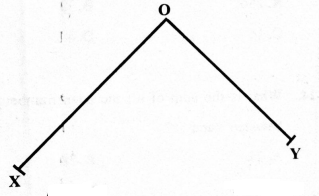
- 11mm
- 110mm
- 50mm
- 60mm
- Six girls take a total of 5 min 30 seconds to skip a rope. How long does each girl take to homeskip if they all take the same time?
- 31min
- 11min 30sec
- 55 sec
- 1min 6 sec
- Work out the volume of the figure drawn below
- 36cm3
- 846cm3
- 144cm3
- 1728cm3
- Find the value of the unknown
7y + 5 = 47- 7
- 52
- 6
- 42
MARKING SCHEME
- B
- C
- D
- A
- A
- B
- C
- D
- D
- C
- B
- A
- A
- B
- C
- D
- D
- C
- B
- A
- B
- C
- D
- B
- C
- A
- B
- C
- D
- C
Creative Arts & Social Studies/R. E Questions and Answers - Grade 6 Opener Exams Term 2 2023 Set 2
ART AND CRAFT
- The technique that involves using dots to create value and make an object look like solid while on a drawing surface is known as
- cross hatching
- smudging
- stippling
- collage
- What is the main function of soap in crayon etching?
- To make the crayons mix well.
- To make the Indian ink to stick well on the waxed surface.
- To add texture and beauty to the crayon composition.
- To make the surface smooth for scratching.
- Alice modelled the item below.
She can use the following methods to decorate it except- incising
- embossing
- stamping
- kneading
- Junet described what calligraphy is. Which one is the correct answer?
- The art of writing on a surface using a pen.
- The art of writing using a brush and paint.
- The art of writing with a beautiful handwriting using a special pen.
- An art of writing words and drawing pictures.
- Grade six learners explained what tertiary colours are. Choose the correct answer they gave?
- Any colour obtained from nature.
- Colours obtained by mixing primary and secondary colours in equal proportion.
- Colours obtained by mixing two or more colours.
- Colours obtained by mixing primary colours.
- Which of these statements best describes montage?
- The art of cutting pictures.
- The art of cutting and pasting pictures on a surface.
- The art of drawing pictures on a surface.
- The art of creating pictures on a surface.
- Which option shows the best source of montage pictures?
- Textbooks
- Storybooks
- Dictionary
- Old newspapers and magazines
- The following are factors to consider when painting. Which one is not?
- Subject matter
- Proportionality
- The type of paint palette.
- Centre of interest.
- Onyango drew the picture below. What is the name of the art shown?
- Stick puppet
- Glove puppet
- Marionette
- Rod puppet
- Which pair consists of natural materials that are used in basketry?
- Polyester, yarn
- Wool, nylon
- Carbon fibre, reeds
- Raffia, sisal fibre
MUSIC
- Which of the following lines is found in the East African Community anthem?
- Ee Mungu tunakuomba.
- Ee Mungu wewe ni mkuu.
- Ee Mungu twaomba uilinde.
- Wewe ni Mungu wetu.
- The highness or lowness of voice while singing is called _______________________________
- rhythm
- pitch
- melody
- volume
- "Muturiru" is wind instrument that is used by which community in Kenya?
- Luhya
- Kikuyu
- Mijikenda
- Kalenjin
- What is the French rhythm of the note below?
- Taa-aa
- Ta-te
- Taa
- Taa-aa-aa
- A certain community group is singing dirges. The songs being sang are most likely
- funeral songs
- wedding songs
- initiation songs
- praise songs
- The following are performance etiquettes when presenting folk songs. Which one is not?
- Dress appropriately.
- Maintain enough space between participants.
- Never acknowledge the applause from the audience.
- Do not stare at the audience whenever one of the presenters makes a mistake.
- The following are aspects of a folk song except one. Which one it is?
- Occasions
- Instrumentation
- Participants
- Body adornment.
- A grade seven learner was singing the song below.
Wash you hands,
Osha mikono,
Sisi sote,
Wash your hands.
The above song is an example of ______________________________________- action song
- sacred song
- topical song
- lullaby song
- The following are roles of a soloist. Which one is not?
- Starting a dance.
- Pitching singers so that they sing without straining.
- Addressing the audience while commanding singers.
- Creating disharmony.
- Which of the following musical instruments is played by bowing?
- Orutu
- Chivoti
- Biringi
- Nzumari
SOCIAL STUDIES
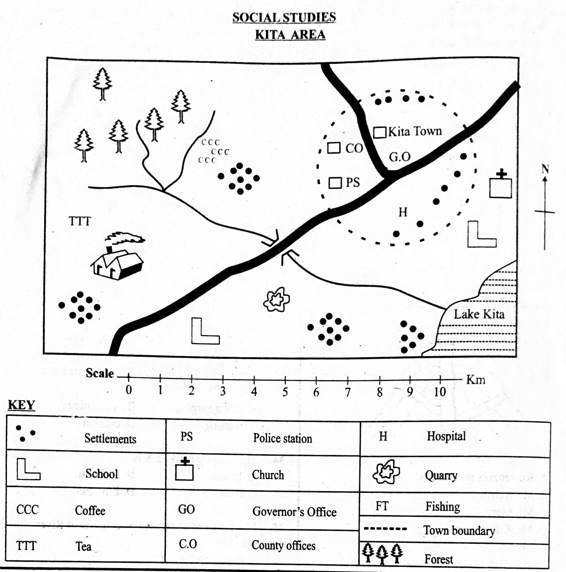
Study the map of Kita area and answer questions 21-25
- Peter walked from the forest to lake Kita. Which direction was he walking from?
- North West
- South East
- South West
- North East
- The climate in the North Western part of Kita area is
- hot and wet
- cool and wet
- hot and dry
- cool and dry
- The following economic activities are practised in Kita area except
- lumbering
- mining
- farming
- fishing
- The elected head of Kita area is a
- County Commissioner
- Chief
- Governor
- Senator
- The type of settlement in Kita area is mainly
- clustered
- linear
- sparse
- scattered
- Grade six learners were asked to identify the countries of Eastern Africa. Who among the following was wrong?
- Sophia - Somalia
- Lydiah- Democratic Republic of Congo
- Obed - Eritrea
- Richard - South Sudan
- Identify the position of Eastern Africa in terms of longitudes and latitudes
- 17° W, 51° E and 37° N and 35° S
- 23°E, 51°E and 22°N, 12°S
- 37°W, 35°E, 17°W, 51'S
- 22°E, 12°E and 23°N, 51°S
- Grade six learners were asked by their Social Studies teacher to name the physical feature drawn below. Who gave a wrong answer?
- Ruwenzori mountains
- Mt. Kenya
- Mt. Meru
- Mt. Kilimanjaro
- The diagram above was formed through a process known as
- faulting
- volcanicity
- folding
- erosion
- The Great Rift valley passes through the following countries except
- Kenya
- Ethiopia
- Sudan
- Uganda
- A group of people who descended from a common ancestor is called
- family
- clan
- tribe
- community
Use the map of Eastern Africa below to answer questions 32-34.
- The town marked Z is
- Addis Ababa
- Juba
- Khartourm
- Mogadishu
- The shaded lake marked Y was formed as a result of
- downwarping
- volcanicity
- faulting
- erosion
- The country marked X is
- Eritrea
- Djibouti
- Somalia
- Ethiopia
- Which pair of communities consists of River Lake Nilotes?
- Shilluk, Nuer
- Acholi, Jie
- Luo, Ogiek
- Njemps, Dorobo
SECTION A:
CHRISTIAN RELIGIOUS EDUCATION
- Grade six learners in Kumi primary school were asked by their CRE teacher to state what was created by God on the 5th day. Who among them gave the correct answer?
- James-sun, moon and stars
- Jane-sea creatures and birds
- John-earth, sea and plants
- Josphine - the skY
- Which one of the following parables of Jesus teaches Christians to use our God given talents well? The parable of the
- mustard seed
- sower
- three servants
- ten virgins
- According to Exodus 31:3, whom did God choose to build the covenant box?
- Hur
- Uri
- Bezalel
- Judah
- A group of people related by blood, marriage or adoption is called
- clan
- family
- tribe
- age group
- Which one of the following is not a type of marriage recognized in Kenya?
- Come we stay marriage
- Christian marriage
- Customary marriage
- Civil marriage
- The time we have when we are free from normal routine work is called
- celebration time
- leisure time
- personal time
- idle time
- The books of the law in the Bible include three of the following except
- Genesis
- Exodus
- Leviticus
- Proverbs
- Which of the ten commandments teaches Christians to respect their marriages?
- The 5th
- The 6th
- The 7th
- The 8th
- According to Jesus, the greatest commandment is the commandment of
- wisdom
- love
- respect to human life
- respect to people's property
- Samson defeated the Philistines because
- of God's power in him
- of the unshaved hair
- of his own strength
- of his own secrets
- Grade six learners were asked by their C.R.E teacher to identify the miracles of prophet Elisha. Who did not give the right response?
- Feeding 1000 prophets
- Healing Naaman of his leprosy
- Raising the son of the widow of Zarephath
- Floating and recovering the lost axe head
- Which response did Jesus give when the devil asked him to throw himself down from the top of the temple?
- Man shall not live on bread alone
- Worship the lord your God and serve only him
- Do not put the Lord your God to test
- I am the light of the world
- Jesus healed the Roman officer's servant because
- of the servant's faith
- of the officer's faith
- Jesus had mercy on him
- he was righteous
- During which miracle did Jesus weep?
- Crucification
- Raising of Lazarus
- Changing water into wine
- Baptism
- On your way to school, you find two of your school mates in grade three fighting over the ownership of a pen. As a Christian, what should you do?
- Run to school so as not to get late
- Help one of them who is your friend
- Report them to the head teacher
- Separate them and try to find out who the owner of the pen is.
SECTION A:
ISLAMIC RELIGIOUS EDUCATION
- Rahma a grade six learner found her friends backbiting their teacher. Which surah can she encourage them to read?
- Al-Fatiha
- Al-Humaza
- Al-Falaq
- Al-Quraish
- "Except those who believe and recommend one another to patience, "This quotation is from surah
- Asr
- Maun
- Masad
- Fiil
- The surah of the Qur'an that must be recited in every prayer is
- An-Naas
- Al-Falaq
- Al-Humaza
- Al-Fatiha
- Zakaria left his home to school in a long sleeved shirt and a pair of shorts. Which part of his body was naked?
- The head
- The stomach
- The navel
- The knees
- Muhammad is a farmer who has planted many trees. Three of the following are importance of planting trees except
- provide shade for people
- provide food for people and birds
- provide home for people
- provide home for birds
- Three of the following are bounties that Allah has given human beings. Which one is not?
- Health
- Women
- Legs
- Life
- Muna a grade six learner was discussing with his friend the pillars of Iman. How many pillars do you think they are likely to have discussed?
- Six
- Seven
- Eight
- Four
- Three of the following are qualities of a Mutaqeen. Which one is not?
- They fear Allah
- They avoid all sins
- They commit shirk
- They give out in charity
- Hasfa was preparing a wall chart for class on the Angels of Allah and their duties. Which angel did she record as the angel of Wahy?
- Mikail
- Ridhwan
- Jibril
- Izrail
- Which one of the following prayer is performed at 6.30 pm?
- Isha
- Dhuhr
- Asr
- Maghrib
- While discussing the attributes of Allah, Maslah a grade six learner wanted to know from her friends the meaning of Al-Khaaliq. What was the possible answer that Maslah may have received?
- The creator
- The sustainer
- The judge
- The fashioner
- On his way to school, Mullah a grade six learner collected broken pieces of bottles from the road and threw them away in the dustbins alongside the road. This act is referred to as
- sadaqah
- zakah
- goodness
- kindness
- Three of the following are characteristics of the angels of Allah. Which one is not?
- They are neither male nor female
- They eat and drink
- They are made from light
- They do not disobey Allah (S.W.T)
- Which one of the following is the first month of Islamic calender?
- safar
- Ramadhan
- Muharram
- Shaban
- Nasteha a grade six learner was studying on the family tree of the prophet (S.A.W). Whom do you think she is likely to have found out to be the mother of prophet Muhammad (S.A.W)?
- Halima
- Khadija
- Aisha
- Amina
MARKING SCHEME
ART & CRAFT
- C
- B
- D
- C
- B
- B
- D
- C
- B
- D
MUSIC
- C
- B
- B
- C
- A
- C
- D
- C
- D
- A
SOCIAL
- A
- B
- A
- C
- A
- B
- B
- A
- B
- C
- B
- D
- A
- A
- A
C.R.E
- B
- C
- C
- B
- A
- B
- D
- C
- B
- A
- C
- C
- B
- B
- D
I.R.E
- B
- A
- D
- D
- C
- B
- A
- C
- C
- D
- A
- A
- B
- C
- D
Integrated Science Questions and Answers - Grade 6 Opener Exams Term 2 2023 Set 2
SCIENCE AND TECHNOLOGY
- A grade 6 learner drew the diagram below on the board. Identify the parts labelled M, N and Q respectively.
- Vena cava, aorta, right ventricle
- Left auricle, pulmonary artery, right ventricle
- Left ventricle, vena cava, right auricle
- Right ventricle, aorta, left auricle
- Which of the following substances turns red litmus paper blue?
- Lemon juice
- Wood ash solution
- Sour milk
- Grape juice
- During adolescence, an adolescent undergoes many physical changes. Which of the following changes will not be experienced in an adolescent boy?
- Shoulders broaden
- Hips broaden
- Increase in height and weight
- Growth of hair in pubic area
- During a visit to a nearby hospital, Grade 6 learners were able to learn about blood transfusion. Among the following statements, which one is not correct about blood transfusion?
- Blood group AB is a universal donor
- Blood group O is a universal donor
- Blood group B can only receive blood from group O and B
- Blood group A can donate blood to a person with group AB
- The following are signs and symptoms of a disease that were observed in a patient.
- Fever and sweating at night
- Pain in the chest when coughing
- Dry and frequent coughs for a long time
- Losing weight over a short period of time
Which among the following diseases does not belong to the same group with the disease described above?- Asthma
- Pneumonia
- Influenza
- Bilharzia
- Joseph wrote the following characteristics of invertebrates during a Science and Technology lesson
- Their body is divided into three body parts
- They have an antennae
- Their body is divided into two parts
- Have simple eyes
- Have a moist skin
Which of the following pairs consists of characteristics of spiders and ticks?- i and ii
- iii and iv
- i and v
- iv and i
- Grade 6 learners were provided with a list of vertebrates and were asked to place animals from the same group together. Which among the following was not correct?
- Kite, dove, eagle
- Lizard, snake, chameleon
- Trout, dolphine, nile perch
- Salamander, frog, newt
- Peter a grade 6 learner drew a diagram showing a summary of the changes in states of matter. Which of the labelled processes will involve an increase in heat?
- F and G
- P and Q
- P and G
- F and P
- During a class discussion, grade 5 learners were discussing about fungi. Among the discussed fungi below, which one is mainly used to make medicine
- Yeast
- Puffball
- Mushroom
- PenicillinICE
- Rael listed components of a word document as shown below
- Title bar
- Ribbon
- Status bar
- Word pad
- Microsoft word
- Typing area
Which one among the ones Rael listed were not correct?- i, vi
- iv, v
- iii, iv
- ii, v
- Amos a grade 6 learner tied a plant leaf with a transparent balloon as shown below. After some hours he went back to make an observation.
What was he most likely investigating?- Transpiration
- Respiration
- Photosynthesis
- Chlorophyll
- The following are statements about different states of matter. Which among the statements is not correct about matter?
- Chalk dust has indefinite shape
- Water vapour has indefinite shape
- Juice does not has definite shape
- A stone has a definite shape
- During a Science and Technology revision lesson, grade 6 learners were asked to state the bone that protects the skull from injuries. Which correct answer did they give?
- Backbone
- Limb bones
- Rib cage
- Skull
- For heat to transfer from one point to another, different media can be used. Which among the following modes of heat transfer can be used in both liquids and gases?
- Radiation
- Conduction
- Convection
- Radiation and convection
- Okumu was studying safety rules. Which of the following safety rules should he observe while preparing for a nature walk?
- Wearing school uniform
- Carrying extra clothes
- Taking plenty of water
- Wearing protective clothing
AGRICULTURE
- During Agriculture lesson in grade 6,learners were asked to match indigenous crops with their edible parts. Which one of the following is correctly matched with the part which is edible?
- Cassava-stem
- Sweet potatoes - stem
- Sorghum-roots
- Spider weed-leaves
- Learners visited a farmer near their school and they were able to discover that the main problem he was facing was destruction of crops by wild animals. They advised him to use a scaring method that involves use of sound. Which of the following methods was he advised to use?
- Euphorbia
- Rattle metals
- Scare crow
- Electric lights
- Grade 6 learners were asked to identify planting materials for establishing creeping crops. Which among the following creeping crops can be grown through splits?
- Thorn melon
- Pumpkins
- Strawberries
- Passion
- During a discussion about soil erosion, Kerenoh drew a diagram on the board to demonstrate a certain method of soil erosion as shown below.
Which among the following methods of controlling soil erosion can be used to control the type of soil erosion shown above?- Planting ground covers
- Planting trees
- Building gabbions
- Ploughing along the contours
- A farmer was seen preparing an organic waste pit. Which of the following is an importance of the organic waste materials to the soil?
- Fasten breakdown of soil
- Improve movement of air in the soil
- Improve soil's ability to hold water
- Provide nutrients to plants
- A farmer spread some dry plant materials on his crop farm. What is the function of the materials be used in the farm?
- Cool the soil
- Prevent surface run-off
- Prevent soil erosion
- Prevent loss of water
- After planting seedlings, a farmer realised that some had dried. He then decided to replace them. The process of replacing dried up seedlings after transplanting is called
- thinning
- gapping
- prunning
- hardening
- Grade 6 learners were discussing about the importance of maintaining appropriate number of small domestic animals. Which among them is not correct?
- To avoid overcrowding
- To reduce the resources used to take care of them
- To reduce the chances of spreading diseases
- To get more rich
- After experiencing heavy rainfall, a farmer visited his farm and was able to notice that part of his farm soil had reduced and increased in another part. What processes would have taken place respectively?
- Erosion and deposition
- Erosion and mulching
- Deposition and erosion
- Mulching and deposition
- The following are reasons for training plants. Which one is not?
- To protect plants from damage
- To improve flower and fruit size quality
- To protect plants from direct sunlight
- To improve plant appearance
HOME SCIENCE
- Benta, Ouma and Kelany made the posters shown
Who among them made posters that show the reasons why we boil food?- Benta, Ouma and Kelany
- Ouma and Kelany
- Benta and Kelany
- Benta and Ouma
- Purity's mother always preserves excess milk she gets from her dairy cow for other uses. Which one of the following is a reason why she preserves the milk? To
- make the milk easy to transport
- increase the amount of milk
- avoid milking the cow always
- avoid feeding the cow always
- Bella has finished taking water using a glass. She wants to clean the glass using a soft cloth. Which of the following is a reason why she should use a soft cloth to clean the glass?
- To avoid using the glass regularly
- To make the glass shine
- The soft cloth is easily available
- To avoid scratching the glass
- When hanging her dress on the clothes line to dry, Jamila realized that the dress had two missing buttons. She decided to go and buy buttons to fix on her dress. Which group of needlework tools will Jamila need to fix the missing buttons?
- Pins, pin cushion, thread, ruler
- Scissors, needle, thimble, pins
- Needle, thread, thimble, scissors
- Thread, thimble, pins, ruler
- Which of the following would be the first step Jamila will take when threading the needle to fix the buttons?
- Put the thread through the eye of the needle
- Cut a piece of thread using an appropriate tool
- Pull the thread through the eye of the needle
- Hold the needle between the thumb and the index finger
- During a Home Science lesson, the teacher came with the following sewing tool.
Identify the tool.- Pin cushion
- Thimble
- Tape measure
- Needle
- The steps below are taken when offering first aid to an epilepsy patient. Arrange them in the correct order.
- Remove anything around the person that may cause injury
- Loosen anything around the neck
- Put a folded sweater under the head
- Let the person lie on the ground
- (i), (ii), (iii), (iv)
- (ii), (iv), (iii), (i)
- (iii), (i), (iv), (ii)
- (iv), (i), (iii), (ii)
- A budget is important because of the following reasons except
- helps save money for future use
- makes one waste money
- enables us to keep records for reference
- helps us live within what we can afford
- Which one of the following is an expense?
- Buying cosmetics and accessories
- Selling masks
- Selling sanitizers
- Selling farm produce
- Grade six learners were asked by their Home Science teacher to write down what they will eat for lunch. Four learners wrote the following
Magret: Chips and soda
Sophy: Githeri, cabbage and avocado
Tina: Chapati and a cup of porridge
Fred: Ugali and kales
Who ate a balanced diet?- Fred
- Sophy
- Tina
- Magret
PHYSICAL AND HEALTH EDUCATION
- Four grade six learners were asked to give out the styles of high jump. Who among them was not correct?
- Peter - The scissors
- Sam - Western roll
- Sarah - Straddle
- Janet - Skier
- After two minutes of play, Rachel complained of severe pain in her ankle. Which of the following could be the cause of the pain?
- She had not warmed up before getting into the game
- She did not have her shoes on during the game
- She ate a lot of food before getting into the game
- She did not drink enough water before the game
- A player was disqualified from the school team for being involved in drugs and substance abuse. Which group of substances below is the player likely to have used?
- Alcohol, glue and milk
- Glue, water and bhang
- Glue, alcohol and bhang
- Bhang, milk and alcohol
- During an inter-class athletics competition, a teacher can use ____________________________ to start off athletes in a race.
- bats
- batons
- starting blocks
- clappers
- While playing kabaddi, the raiders are the
- defensive players
- attacking players
- reserve players
- players who have just joined the game
- You have been tasked by your team members to improvise a relay race baton. Which group of items would be appropriate for you to use?
- Manilla papers, timbers, nails
- Manilla papers, nails, glue
- Manilla papers, glue, scissors
- Manilla papers, timber, glu
- The equipment marked K below are used in high jump. Name them
- Posts
- Upright bars
- Cross bars
- Lanes
- Which word describes a feeling of having lost hope and confidence when playing
- Dedication
- Commitment
- Demoralized
- Fair play
- The following words describe how integrity can be displayed in games and sports except
- respect
- fair play
- honesty
- injustice
- The following statements are true about baton exchange. Which one is false?
- The baton should not be thrown
- The baton can be exchanged anywhere
- Lanes should not be obstructed
- The baton should be carried in the hand
- Below is a compilation of games and sporting activities. Which combination requires a rope as an equipment?
- Tug of war and rope skipping
- Netball and basketball
- Handball and Rugby
- Softball and rounders
- Which of the following games is played using a disk?
- Handball
- Netball
- Frisbee
- Volleball
- Grade six learners were having a swimming gala in their school. One of the learners almost drowned but he was saved. Which swimming stroke is likely to have been used in saving the learner?
- Breastroke
- Sidestroke
- Freestyle
- Butterfly
- Physical exercise does all the following to the body except
- relieves stress
- burns excess fats in the body
- makes one physically fit
- makes one thin
- The following diseases are signs and symptoms of a strain. Which one is not?
- Swelling
- pain
- Muscle cramping
- Fractured limb bone
MARKING SCHEME
SCI
- C
- B
- B
- A
- D
- B
- C
- A
- D
- B
- A
- A
- D
- C
- D
AGRI
- D
- B
- C
- A
- C
- D
- B
- D
- A
- C
H/SCI
- B
- A
- D
- C
- B
- B
- D
- B
- A
- B
PHE
- D
- A
- C
- D
- B
- C
- B
- C
- D
- B
- A
- C
- B
- D
- D
Shughuli za Kiswahili Questions and Answers - Grade 6 Opener Exams Term 2 2023 Set 2
Kusikiliza na kuzungumza
Soma mazungumzo yafuatayo kisha ujibu maswali.
Juma : Shikamoo mwalimu?
Bw. Bakari: Marahaba Juma. (Akimwashiria akae) Karibu uketi.
Juma : (Akiketi) Asante sana mwalimu.
Bw. Bakari: Darasani unaendeleaje na masomo?
Juma : Mwalimu, ninaendelea vizuri. Ninajikaza kwani mvumilivu hula mbivu.
Bw. Bakari: (Akitikisa kichwa) vizuri sana Juma. Nina furaha sana kusikia kuwa unafanya bidii za mchwa. Je, kuna somo linalokutatiza?
Juma : Naam mwalimu! Somo la Kiswahili linanipatia changamoto nyingi. Ninajaribu juu chini kujikaza ili nilielewe vizuri.
Bw. Bakari: Bidii ni muhimu sana kama ulivyosema. Vilevile unafaa kufanya mazoezi ya kusikiliza na kuzungumza Kiswahili. Ukifanya hivi utazidi kukipenda Kiswahili.
Juma : (Akitikisa kichwa kukubaliana naye) Siku hizi huwa nasikiliza vipindi vya Kiswahili kwenye redio na kutazama habari katika Kiswahili. Baadaye huwaelezea wenzangu niliyosikia.
Bw. Bakari: Vizuri sana. Hiyo ni hatua ya kutia moyo. Zaidi ya hayo hakikisha unauliza maswali darasani mahali ambapo hujaelewa.
Juma : Huwa naogopa kuchekwa na wenzangu kwani wanakielewa Kiswahili kuniliko mimi.
Bw. Bakari: (Akimkata kauli) Kuogopa? Kumbuka kuuliza si ujinga.
Juma : (Akiwazia maneno hayo) Nimekuelewa mwalimu. Kutoka leo nitaanza kuuliza maswali.
Bw. Bakari: Vilevile uwe ukisoma vitabu vya Kiswahili ili ukuze ubunifu wako hasa katika kuandika.
Juma : Nitafanya hivyo kwa sababu nataka kuwa mwandishi bora darasani.
Bw. Bakari: Aidha kumbuka kushirikiana na wenzako masomoni kwani mkono mmoja haulei mwana.
Juma : Ndio mwalimu. Nitaufuata ushauri huo. Ninaelewa kuwa umoja ni nguvu...
Bw. Bakari:(Akimchachawiza) Nao utengano ni udhaifu. Ninaona sasa umepata mwamko mpya. Hakikisha umefanya yale tuliyozungumzia. Sasa enda darasani ukaendelee na masomo yako.
Juma : (Akiondoka) Asante mwalimu. Mungu akujalie mema.
- Mwanafunzi alimwamkua mwalimu wake Shikamoo kuonyesha maadili gani?
- Bidii
- Heshima
- Huruma
- Uoga
- Juma anapata changamoto katika somo gani?
- Hesabu
- Kiswahili
- Kiingereza
- Sayansi
- Ili kukuza stadi ya kusikiliza na kuzungumza Juma anafanya nini?
- Kusikiliza na kutazana vipindi kisha kuwaelezea wenzake.
- Kusoma vitabu vya Kiswahili.
- Kuandika insha nyingi.
- Kushirikiana na wenzake.
- Je, ungeyasikiliza mazungumzo ya mwalimu na mwanafunzi, ungejifunza nini?
- Kuongea na mwalimu humfanya mwanafunzi asifiwe.
- Si vizuri kuuliza maswali sana darasani.
- Ni vizuri kutafuta ushauri-nasaha kutoka kwa wakubwa wako.
- Somo la Kiswahili ni gumu sana.
- Methali 'mkono mmoja haulei mwana' inatufunza kuwa na:
- Bidii
- Ushirikiano
- Upole
- Utengano
Swali la 6 hadi la 8
Soma kifungu kifuatacho kisha ujibu maswali. Songambele
Kijiji cha Songambele kina wakazi wengi sana. Wakazi hawa walifurahia utulivu kwa muda mrefu. Hata hivyo, likizo iliyopita wanakijiji walilalamikia mienendo mibaya ya baadhi ya vijana. Kuna vijana ambao walivalia mavazi yasiyofaa. Kuna wale ambao walianza kukataa kwenda shuleni. Wengine hawakutii watu wazima. Walisahau kuwa heshima si utumwa.
Bi.Mwema ni mmoja wa wanakijiji hiki. Alikuwa na shirika lake kwa jina, Boresha Vijana. Kupitia kwa shirika hili, alitumia redio kuwaelimisha vijana kuhusu mienendo mizuri. Aliandaa siku ya michezo kijijini. Vikundi mbalimbali vilishiriki. Baada ya michezo hii, washindi walituzwa. Bi.Mwema alitumia nafasi hii kuwashauri.
Bidii ya Bi.Mwema ilifaulu. Vijana waliokuwa wamepotoka walibadilika. Wanakijiji walifurahi. Walitambua juhudi za Bi.Mwema. Waliandaa sherehe kubwa. Walimtuza Bi.Mwema kwa juhudi zake. Hakika, mcheza kwao hutuzwa.
- Wakazi wa kijiji cha Songambele walifurahia _______________________________ kwa muda mrefu.
- maandamano
- amani
- vijana
- shida
- Kulingana na aya ya kwanza baadhi ya vijana walikosa maadili gani?
- Utiifu
- Umoja
- Bidii
- Ukarimu
- Maana ya neno andaa kama ilivyotumika katika kifungu hiki ni:
- Tayarisha
- Safari
- Zuru
- Maliza
Swali la 9 hadi la 12
Soma kifungu kifuatacho kisha ujibu maswali.
SHULE YA TAMARA, S.L.P 130,
BUSARA.
05-05-2023
Kwa muhibu Pendo,
Pokea salamu nyingi kutoka kwangu. Hujambo? Natumai huna neno. Mimi ni mzima. Ninaendelea vizuri na masomo yangu. Musimu huu wa masika huku kwetu kuna mvua nyingi sana. Wazazi na walimu wanahakikisha kuwa tumejikinga vilivyo na mvua na mbu ambao wameongezeka. Kwa kufanya hivi hatutapata magonjwa kama vile Mafua, Nimonia na Malaria. Nakushauri pia uwe mwangalifu.
Madhumuni ya kukuandikia barua hii ni kukupa mawaidha kuhusu faida za mahusiano mema na wenzako shuleni. Kuanzia ukiwa na uhusiano mzuri na wenzako, utaweza kushirikiana nao. Umoja huu utakufaa masomoni na maishani. Utaweza kujifunza mengi kutoka kwa wenzako. Vilevile ukiwa na matatizo watakusaidia. Kumbuka kuwa umoja ni nguvu utengano ni udhaifu.
Kuongezea mahusiano mema huleta heshima. Wahenga walisema kuwa heshima si utumwa. Ukimheshimu mwenzako atakupenda na kukukubali jinsi ulivyo. Heshima kwa wengine huondoa uadui ambao huleta utengano shuleni. Wanafunzi hushirikiana na kufanya vyema masomoni. Kusema kweli mahusiano mema ni uti wa mgongo wa elimu.
Licha ya hayo amani huletwa na mahusiano mema. Mwanafunzi akitangamana na wengine huweza kuwaelewa nao kumwelewa. Shuleni kuna wanafunzi wenye hali mbalimbali. Utangamano mzuri wa wanafunzi hukuza amani. Amani huwawezesha kusoma vyema bila usumbufu wowote. Huweza kujifunza mengi na kuwa mwerevu zaidi.
Ninatumai nimekuongezea maarifa sahibu yangu. Hakikisha unahusiana vyema na wenzako ili uishi maisha mema. Kwaheri!
Wako wa moyoni,
Amara Mwara
- Kifungu ulichokisoma ni cha aina gani?
- Masimulizi
- Barua ya kirafiki
- Barua rasmi
- Wasifu
- Mwandishi aliandika barua hii katika msimu gani?
A. Wa jua kali
B. Wa baridi kali
C. Wa mvua nyingi
D. Wa mvua ndogo ndogo. - Mwandishi wa barua hii ni nani?
- Tamara
- Amara
- Mwalimu
- Mzazi
- Gani si manufaa ya mahusiano mema kulingana na kifungu?
- Heshima
- Umoja
- Amani
- Fujo
Swali la 13 hadi la 15
Soma kifungu kifuatacho kisha ujibu maswali.
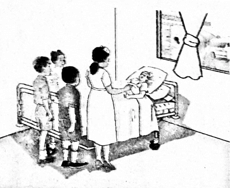
Siku moja tulizuru hospitali na kumuuliza daktari kiungo kilicho muhimu kuliko vingine. Daktari alitueleza kuwa mwili wa binadamu una viungo mbalimbali vinavyotekeleza kazi tofautitofauti. Viungo vinavyomeng'enya au kusaga chakula ni tumbo kongosho, uchengelele, utumbo mpana, nyongo, kibofu cha nyongo, kibole na wengu. Ubongo na uti wa mgongo huwezesha mwili kujifahamu. Moyo nao huzungusha damu mwilini. Hatimaye zoloto na pafu hutumika katika mfumo wa hewa. Ni vigumu kusema ni kiungo kipi kilicho muhimu kuliko vingine. Tunafaa kutunza viungo hivi. Tunafaa kufanya kazi kwa kuchangizana kama viungo vya mwili.
- Neno tulizuru lina maana sawa na
- tuliuliza
- tulitoka
- tuliona
- tulitembea
- Kifungu hiki kinazungumzia nini?
- Utunzaji wa viungo vya mwili.
- Viungo vya ndani vya mwili.
- Viungo muhimu kuliko vingine
- Viungo vya ndani na vya nje vya mwili
- Kulingana na kifungu:
- Hakuna kiungo kilicho muhimu kuliko kingine.
- Moyo ni muhimu kuliko viungo vingine vyote.
- Kuna viungo muhimu kuliko vingine.
- Mapafu ni muhimu kuliko moyo.
Swali la 16 hadi la 20
Soma kifungu kifuatacho. Kwa kila swali umepewa majibu manne. Chagua jibu lifaalo zaidi kati ya yale uliyopewa.
Muhula ___16__ tulifunzwa mambo __17__ katika somo __18__ ninalipenda sana Kiswahili. Tulifundishwa vivumishi vya sifa kama vile __19__ na viwakilishi vya nafsi kama vile __20__.
| A | B | C | D | |
| 16. | uliopita | iliyopita | zilizopita | kilichopita |
| 17. | kingi | wengi | vingi | mengi |
| 18. | ambayo | ambazo | ambalo | ambao |
| 19. | changu | kubwa | hili | watatu |
| 20. | mimi | huu | kumi | dogo |
Swali la 21 hadi la 30
Chagua jibu sahihi.
- Hii ni picha ya mchezaji. Anacheza mchezo gani?

- Chesi
- Kandanda
- Tenisi
- Jugwe
- Hili ni jedwali la maneno. Chagua jibu linaloonyesha vitenzi?
A shamba Mimi Wangu B lakini Lo! Polepole C lala Soma palilia D Nyuma ya Igiza Pendwa - Kati ya maneno haya ni gani litakuja mwisho kialfabeti?
- Kavu
- Kaa
- Kaza
- Hal
- Ni maneno yapi yaliyo katika ngeli moja?
- Ukuta, unywele, uzi
- Mkeka, sikio, jicho
- Nyusi, goti, tumbo
- Pafu, moyo, ini
- Chagua jibu ambalo ni wingi wa sentensi:
Mpera wa mkulima mrefu una ua.- Mpera wa wakulima warefu una maua.
- Mipera ya wakulima warefu ina maua.
- Mipera ya mkulima mrefu ina maua.
- Mipera ya wakulima warefu ina nyua.
- Chagua maamkuzi au maagano ya wakati wowote
- Masalkheri
- Sabalkheri
- Alamsiki
- Salaam aleikum!
- Ni maelezo gani yasiyo sahihi kuhusu alama za uakifishi?
- Alama ya hisi hutumiwa kuonyesha mshangao.
- Alama ya ritifaa hutumiwa katika maneno yenye ving'ong'o
- Koloni hutumika kuonyesha hisia mbalimbali.
- Alama ya kiulizi hutumika katika sentensi ambayo ni swali.
- Chagua sentensi ambayo imetumia kirejeshi 'amba-' vizuri.
- Waimbaji ambaye hawakuimba walienda.
- Kalamu ambayo imevunjika ni yangu.
- Mkeka ambalo umeanguka ni huu.
- Meza ambacho imejengwa ni nzuri.
- Kamilisha tashbihi hii:
Mlafi kama ________________________________- Fisi
- Chiriku
- Kasuku
- Nzi
- Chagua jibu ambalo ni tofauti na mengine.
- Kiangazi
- Masika
- Kipupwe
- Mafuriko
INSHA
Umepewa dakika 40 kuandika insha yako
Andika insha ya kusisimua kuhusu mada ifuatayo:
MECHI YA KUFURAHISHA
MARKING SCHEME
- B
- B
- B
- C
- B
- B
- A
- A
- B
- C
- B
- D
- D
- B
- A
- A
- D
- C
- B
- A
- B
- C
- C
- A
- B
- D
- C
- B
- A
- D
English Questions and Answers - Grade 6 Opener Exams Term 2 2023 Set 2
Read the dialogue below and answer questions 1 to 5
Grace : Hi Beth, what a pleasant surprise! It is a pleasure seeing a school friend after so many years.
Beth : Indeed it is. How are you and what have you been up to?
Grace : I am great. Do you remember the paintings I made for competition in school?
Beth : Yes I do, and I always told you what a great artist you would be one day.
Grace : Well, I guess you were right there.
Beth : What do you mean?
Grace : After secondary school, I studied painting at The County School of Art and today I am a professional painter.
Beth : Oh really? That's great news. I never doubted your potential.
Grace : I know, and I believe that the confidence you showed in me was one of the factors which encouraged me to chase my dreams. Beth : Don't flatter me. This is all the fruit of your hard work.
Grace : I am not. Believe me. I never considered my drawings of any value. It was you who saw the talent in me and gave me the boost I needed.
Beth : Well then, I guess I deserve a treat.
Grace : You deserve more than that, but a treat is surely in order.
Beth : Let's have some coffee
- It is true to say that Beth and Grace _____________________
- were good at painting
- are not friends.
- were classmates many years back
- loved making paintings
- What was the most important thing that Beth did to Grace?
- She helped Grace paint
- She encouraged Grace to paint more.
- She bought grace some coffee.
- She gave Grace a treat.
- Who went to The County School of Art after secondary school?
- Both
- Grace
- None
- Beth
- Three of the following words can be used to replace the word flatter as used in the passage except one. Which one?
- Joke
- Commend
- Praise
- Compliment.
- All the following similes could be used to describe how happy the two girls were when they met, except
- as happy as sand boy
- as happy as a queen
- as happy as a lark
- as happy as clam
Read the passage below and answer questions 6, 7 and 8.
There are a few things to consider when planning a school sports day. There are usually far many children in Primary, and there is a great age difference. Some schools plan to have two sports days, one for lower grades and the other for upper grades, whilst others choose to have it on the same day but in different categories of ages.
Is it best to involve everyone, from children to parents, but for some reasons some schools would rather keep it as a school-only affair?
For pupils the school sports day is usually a break from class work and so the parents love to be involved and join in as much as possible. They are quite happy to join in the races and help on the day.
Once the children move to Secondary school, the kids are quite happy to take part and help with arranging the events independently of their parents, so many secondary schools host the event during school hours just for the children. They are faced with question whether to choose some elements of the Primary games such Egg and Spoon races and three- legged games, or do to stick with track events and the more adventurous sports activities the children use in Secondary School
- What makes it necessary to have the sports day in two different days in some schools?
- Large number of pupils
- Lower and upper grades
- Age difference
- Attendance of parents
- Which of the following is a primary school game only?
- Egg and spoon
- Racing
- Track event.
- More adventurous sports activities.
- The best title for the passage above is ___________________
- Primary school sports
- Parents day
- Secondary school sports
- The sports day.
Read the passage below and answer questions 9 - 12.
It is so unfortunate that Africans have lost most of the cultures they cherished for many years through a relentless process of cultural erosion. Findings indicate cultural erosion manifests as loss of dignity and dented humanity; African perceptions and misconceptions that things and practices from the west are superior to those from Africa; Africans belittling and lowering their cultures to take second-rate position; trend of some Africans to view their identity through western world lenses. However, some of African communities have started efforts to bring around and strengthen African cultures: Restoration of the cultural rites of passage of the community members; and concerted campaign of fight against practices that do not go well with the African culture. Lately the debate on same gender marriage has been in the headlines of most newsprint and media houses.
Religious leaders have been in the front line in this fight. The west has however not taken this lying down. We have seen concerted effort to fight back through NGOS and tying western aids to the agenda
- The word cherished as used in the passage could best be replaced by
- valued
- cared
- preserved
- followed
- The following are ways in which loss of African culture is seen except
- African misconceptions that practices from the west are superior to those from Africa.
- Restoration of the cultural rites of passage of the community members
- Africans belittling and lowering their cultures to take second-rate position.
- Trend of some Africans to view their identity through western world lenses.
- Religious leaders as used in the passage may mean all the following except
- Monk
- Sheikh
- Bishop
- Politician
- From the passage above the phrase bring around has been used to mean
- stop
- revive
- change
- increase
Read the passage below and answer questions 13-15.
For you to make an informed career choice, you need to know about a number of things; yourself (self-knowledge); education and training opportunities. People are different and look for different things in jobs. Some people are artistic and creative in nature and therefore thrive in environments that encourage creativity. These people tend to feel limited by rules and do not like routine for example, graphic designers. Others prefer an environment with clear expectations and rules. You must know your values and interests: Values are things that are important to you and mostly influenced by family, community, religion and school. Some people enjoy careers that give them the opportunity to lead or guide whilst others prefer careers that allow them to work independently.
Interests are those things that you enjoy and like doing. An individual who likes working with money and balancing books could consider a career in accounting whilst someone who enjoys working with their hands and machines could consider a career in engineering or surgery.
Abilities are things you are able to do or qualities you possess naturally which distinguish you and allow you to do certain things that not all individuals can do. An example of ability is being able to create beautiful artwork.
Now that you have explored your interests and the type of career you are interested in, you need to know what type of training and learning you will need to enable you to enter into that career.
- The word opportunities as used in the passage could best be replaced by
- chance
- choice
- decision
- career.
- Things that are important to you and mostly influenced by family, community, religion and school are called
- Careers.
- interests
- values
- abilities
- After you have made an informed career choice the next thing you need to know is ______________
- your abilities
- the type of training and learning you will need
- your values
- your interests
Read the passage below keenly. It contains blank spaces numbered 16 to 20. Fill in the spaces using the best alternative from the choices given.
Preparing a budget forces you to take a close look at your spending habits. When reviewing your expenses, you may notice that
__ 16__ spending money on things you do not need such as internet subscription__17__Budgeting allows you to rethink your spending habits and refocus your financial goals.
Taking a look at your expenses, you __18__ see that one month, you spent more money on eating out than cooking at home. By reviewing your budget, you can make effective changes as a result. If you see that you __19__ overspending target amounts set in your budget for such discretionary items, you may choose to adjust how much you commit to luxury or nonessential spending in __20__ of saving for a new car or a major home improvement project that could also add to your place's resale value.
| A | B | C | D | |
| 16. | you're | your | you | yours |
| 17. | , | . | ! | ? |
| 18. | might | can | may | could |
| 19. | are | were | is | was |
| 20. | instead | exchange | form | favour |
For questions 21 to 23 complete the proverbs given
- All that glitters is not ___________________________.
- new
- gold
- good
- silver
- ___________________________and tide never wait for anyone
- Money
- Bus
- Sun
- Time
- One man's meat is another man's ___________________________
- cow
- food
- stew
- poison
For questions, 24 to 26 choose the correct word to fill the gap in the sentence.
- That is the ___________________________ mountain in Africa.
- tallest
- tall
- most taller
- taller
- The ___________________________of the two girls is the first born.
- short
- shortest
- shorter
- most short
- The book was found in ___________________________ expected place in the school.
- most
- more
- least
- less
For questions, 27 to 28 choose the correct word to complete the sentence.
- The pot was so hot ___________________________Jimmy dropped it immediately.
- and
- but
- so
- that
- We had barely left the hall ___________________________ it exploded into a ball of fire.
- soon
- when
- than
- while
Complete the similes below in number 29 and 30.
- The suspect pretended to be as deaf as a ___________________________
- bat
- bird
- lion
- deer
- Before you leave the class it must be as clean as a _________________________.
- tomb
- new pin
- church
- water
COMPOSITION
You have 40 minutes to write your composition.
Write an interesting composition:
That day I learnt that the first step is always the hardest........................
MARKING SCHEME
- C
- C
- B
- A
- B
- C
- A
- D
- A
- B
- D
- C
- A
- C
- B
- A
- B
- C
- A
- D
- B
- D
- D
- A
- B
- C
- D
- B
- A
- B
Mathematics Questions and Answers - Grade 6 Opener Exams Term 2 2023 Set 2
QUESTIONS
- Write the number 99099 in words.
- Ninety nine thousand, nine hundred and ninety nine.
- Ninety thousand and ninety nine.
- Ninety nine thousand and ninety nine
- Nine hundred and ninety nine thousand and ninety nine.
- A tea factory sold 24568 packets of milk in one day. What is the place value of digit 4?
- Thousands
- Tens
- Hundreds
- Tens of thousands
- Find the LCM of 12, 18 and 36
- 6
- 36
- 12
- 72
- Find the quotient of 9060 and 3
- 203
- 3020
- 27180
- 2030
- A shopkeeper bought 4-kg of sugar. He later bought another 2-kg. How many kilograms did he buy altogether?
- 6½kg
- 64/6kg
- 21/6kg
- 55/6kg
- Which number is represented by letter x in the equation below?
x + 9 = 24- 33
- 15
- 18
- 23
- Dennis was sent by his mother to buy the following items:
Two packets of milk @sh. 60
I loaf of bread @sh. 65
Three pencils at sh. 60 each
He gave the shopkeeper sh. 500 note. How much balance did he get?- sh. 365
- sh. 235
- sh. 135
- sh. 315
- Moses bought 19kg of meat. He later sold 8.4kg. How many kilograms remained
- 6.5kg.
- 27.4kg
- 10.3kg
- 10.6kg
- What is the place value of digit 8 in the decimal 39.0985?
- Tenths
- Thousandths
- Thousands
- Hundredths
- A grade 5 boy had a box with the measurements below
Find the volume of the box- 120cm2
- 24cm3
- 120cm3
- 240cm3
- Arrange the fractions 1/2, 5/6,11/12, and 2/3 ascending order.
- 1/2, 2/3, 5/6,11/12
- 1/2,5/6, 2/3, 11/12
- 11/12,5/6, 2/3,1/2
- 5/6, 2/3,11/12,1/2
- Nyeri town had a population of 124989 people. Round off this number to the nearest thousand.
- 124900
- 130000
- 125000
- 124000
- Find the reciprocal of 125/6
- 77/6
- 6/77
- 125/6
- 6/125
- Work out:
√1296 + 52- 25
- 36
- 180
- 61
- A school has 952 learners. Each learner was given 13 exercise books. How many exercise books were given altogether?
- 12476
- 965
- 95213
- 12376
- Find the missing number in the equivalent fractions below
= 63
8 72- 7
- 9
- 8
- 13
- Allan scored 88% in a Mathematics test. Express his mark as a fraction in its simplest form.
- 88/10
- 22/25
- 88/100
- 44/50
- Susan had 19.596kg of flour. Round off the number of kilograms to two decimal places.
- 20.00
- 19.59
- 19.6
- 19.60
- During a Mathematics lesson 0.63 of the. learners were girls. What percentage of the learners were girls?
- 63/10
- 6.3
- 63%
- 0.63
- Complete the pattern below
70, 140, 210, 280, ________________- 210
- 350
- 340
- 420
- How many ½ kg packets of flour can one get from 36kg of flour?
- 72
- 18
- 36
- 12
- A carpenter had a piece of wood measuring 73m 50cm long. It was cut into 7 equal pieces. What was the length of each piece?
- 10M 50cm
- 10M 5 cm
- 514M 50cm
- 7 M 350cm
- What is
(12/3)2 ?- 27/9
- 3/5
- 14/9
- 9/27
- The distance from Bungoma to Busia is 65398m. What is the distance in kilometres and metres?
- 65m 398km
- 65km 398m
- 653km 98m
- 6km 5398m
- In a hall, chairs are arranged in 252 rows. Each row has 42 chairs. how many chairs are there in the hall?
- 6
- 10484
- 10584
- 10574
- A certain test took 45 minutes 30 seconds. How much time was this in seconds
- 2700 seconds
- 4530 seconds
- 75 seconds
- 2730 seconds
- A square has a length of 28cm. What is the area of the square?
- 784cm
- 112cm2
- 784cm2
- 112cm
- Using a protractor, measure angle X below.
What is the measure of the angle?- 95°
- 85°
- 90°
- 63°
- Francis walked from home to school in the morning. Later his teacher sent him to the market to buy him a book which he took to back to school. What distance did he cover if he later went home in the evening?
- 1km 700m
- 3km 400m
- 2 km 300M
- 2 km 900m
- The table below shows the number of learners from grade one to six in Bidii primary school.
What is the total number of learners from grade one to six in the school?Grade Number of learners One 46 Two 48 Three 42 Four 39 Five 41 Six 45 - 222
- 263
- 219
- 261
MARKING SCHEME
- C
- A
- B
- B
- B
- B
- C
- D
- B
- C
- A
- C
- B
- D
- D
- A
- B
- D
- C
- B
- A
- A
- A
- B
- C
- D
- C
- A
- B
- D


